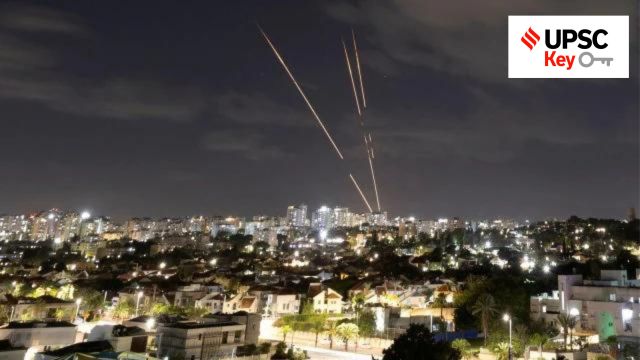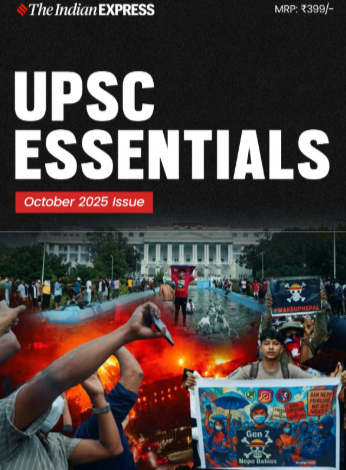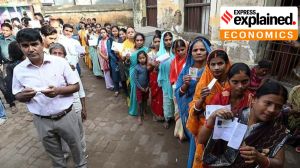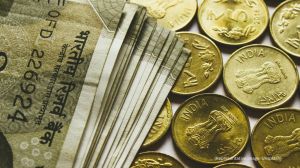Priya Kumari Shukla is a Senior Copy Editor in the Indian Express (digital). She contributes to the UPSC Section of Indian Express (digital) and started niche initiatives such as UPSC Key, UPSC Ethics Simplified, and The 360° UPSC Debate. The UPSC Key aims to assist students and aspirants in their preparation for the Civil Services and other competitive examinations. It provides valuable guidance on effective strategies for reading and comprehending newspaper content. The 360° UPSC Debate tackles a topic from all perspectives after sorting through various publications. The chosen framework for the discussion is structured in a manner that encompasses both the arguments in favour and against the topic, ensuring comprehensive coverage of many perspectives. Prior to her involvement with the Indian Express, she had affiliations with a non-governmental organisation (NGO) as well as several coaching and edutech enterprises. In her prior professional experience, she was responsible for creating and refining material in various domains, including article composition and voiceover video production. She has written in-house books on many subjects, including modern India, ancient Indian history, internal security, international relations, and the Indian economy. She has more than eight years of expertise in the field of content writing. Priya holds a Master's degree in Electronic Science from the University of Pune as well as an Executive Programme in Public Policy and Management (EPPPM) from the esteemed Indian Institute of Management Calcutta, widely recognised as one of the most prestigious business schools in India. She is also an alumni of Jamia Milia Islamia University Residential Coaching Academy (RCA). Priya has made diligent efforts to engage in research endeavours, acquiring the necessary skills to effectively examine and synthesise facts and empirical evidence prior to presenting their perspective. Priya demonstrates a strong passion for reading, particularly in the genres of classical Hindi, English, Maithili, and Marathi novels and novellas. Additionally, she possessed the distinction of being a cricket player at the national level. Qualification, Degrees / other achievements: Master's degree in Electronic Science from University of Pune and Executive Programme in Public Policy and Management (EPPPM) from Indian Institute of Management Calcutta ... Read More
UPSC Key: India-Maldives, West Asia crisis and Monetary Policy Committee
Why India's tourism industry and foreign tourist arrivals is relevant to the UPSC Exam? What significance do topics like Ayushman Bharat – Pradhan Mantri Jan Arogya Yojana (AB-PMJAY), Israel-Hamas Conflict and instruments of monetary policy have for both the preliminary and main exams? You can learn more by reading the Indian Express UPSC Key for October 7, 2024.
 UPSC Key October, 2024: Here's what you should be reading from the October 7, 2024 edition of The Indian Express (Reuters)
UPSC Key October, 2024: Here's what you should be reading from the October 7, 2024 edition of The Indian Express (Reuters)Important topics and their relevance in UPSC CSE exam for October 7, 2024. If you missed the October 6, 2024 UPSC CSE exam key from the Indian Express, read it here
FRONT PAGE
Muizzu meets PM today, says India aware of fiscal situation, will ease burden
Syllabus:
Preliminary Examination: Current events of national and international importance.
Main Examination: General Studies II: India and its neighbourhood- relations.
What’s the ongoing story– Ahead of his bilateral meeting Monday with Prime Minister Narendra Modi, Maldives President Mohamed Muizzu has flagged the need for financial aid to his country, saying Delhi is “fully cognisant” of the island nation’s fiscal situation and will always be ready to “ease the burden” as one of Male’s biggest development partners.
Know Basics-
• Where is Maldives? Mark on your map
• What is Indian Ocean Region? Mark on your map
• Which water channel separates Maldives and Lakshadweep?
• India and Maldives share ethnic, linguistic, cultural, religious and commercial links steeped in antiquity-Know more about India and Maldives
Know the Background-
• Ties between the two countries have been under strain ever since Muizzu rode to power last November on an ‘India Out’ election plank.
• Controversial and derogatory remarks from Maldivian junior ministers about India and Prime Minister Narendra Modi, a backlash in the form of a ‘Boycott Maldives’ campaign trending on Indian social media, President Muizzu’s thinly veiled rebuke that Maldives ‘may be a small island nation, but that does not allow others to bully the country’ demonstrated how a once robust bilateral equation can quickly deteriorate into a very public diplomatic debacle.
Key Points to Ponder-
• Political developments in the Maldives in the last few years-Know in detail
• How are things between India and the Maldives now?
• What was the ‘India Out campaign’?
• Why Maldives is Geo-Strategically Important to India?
• Why India is geo-strategically important to Maldives?
• India and Maldives-What are the major issues in bilateral relations?
• The recent bilateral meeting between Prime Minister Narendra Modi and Maldives President Mohamed Muizzu-what are the expectations?
• “President Mohamed Muizzu is perceived as being pro-China and anti-India”. In light of the recent visit by the President of the Maldives, to what extent do you agree with this perception?
• What Steps India has taken in the recent years to ensure friendly relations with Maldives?
• Why the two countries need each other?
For Your Information-
• The Maldives is looking at a debt default as its foreign exchange reserves have dropped to $440m (£334m), just enough for one-and-a-half months of imports.
• Last month, global agency Moody’s downgraded the Maldives’ credit rating, saying that “default risks have risen materially”. India has already offered financial support worth $1.4 billion to Male for various infrastructure and development projects.
Do You Know-
• Maldives’ proximity to the west coast of India (barely 70 nautical miles from Minicoy and 300 nautical miles from India’s West coast), and its location at the hub of commercial sea-lanes running through the Indian Ocean (particularly the 8° N and 1 ½° N channels) imbues it with significant strategic importance to India.
• Maldives is one of the key elements in India’s maritime security calculus. The security scenario in India’s periphery in the Indian Ocean is very much linked to the maritime strength of Maldives. This is the reason why India invests on Maldives’ security by training its defence forces.
• Estimates suggest that almost 70 per cent of Maldives’ defence training is done by India — either on the islands or in India’s elite military academies. India has trained over 1,500 Maldivian National Defence Force (MNDF) personnel in the past 10 years.
• The Indian Navy has given aircraft and choppers to the Maldivian defence forces for aerial surveillance, and have trained their personnel on how to land vertically in the islands. India also wants to set up a coastal radar system in Maldives, with a view to keep an eye on the activities in the Indian Ocean.
Trivia-
• India’s Neighbourhood First Policy: According to Ministry of External Affairs, India’s ‘Neighbourhood First policy’ guides its approach towards the management of relations with countries in its immediate neighbourhood. the concept of the Neighbourhood First Policy came into being in 2008. It was conceived to bolster relations with certain priority countries such as Afghanistan, Bangladesh, Maldives, Myanmar, Nepal, Pakistan and Sri Lanka.
The Neighbourhood First policy, inter alia, is aimed at enhancing physical, digital and people to people connectivity across the region, as well as augmenting trade and commerce. This policy has evolved into an institutional priority for all the relevant arms of the Government managing relations and policies with our neighbourhood.
• SAGAR: The ‘Security and Growth for All in the Region’ (SAGAR) concept was first articulated by the Prime Minister in Mauritius in 2015. Under this concept, India envisages a free, open, inclusive, 4 peaceful, and prosperous Indo-Pacific region, one which is built on a rules-based international order, sustainable and transparent infrastructure investment, freedom of navigation and overflight, unimpeded lawful commerce, mutual respect for sovereignty, peaceful resolution of disputes, as well as equality of all nations. Guided by SAGAR, India is making concrete contributions in connectivity, capacity building, disaster management, enhancing people to people exchanges, promoting sustainable development, creating awareness on illegal, unreported, unregulated fishing, enhancing maritime safety and security as well as strengthening underwater domain awareness in the Indian Ocean Region.
Other Important Articles Covering the same topic:
📍Maldives, India, China: history shapes the present
📍India-Maldives ties: Amid row, why the two countries need each other and what is at stake
Previous year UPSC Mains Question Covering similar theme:
📍Discuss the geopolitical and geostrategic importance of Maldives for India with a focus on global trade and/energy flows. Further also discuss how this relationship affects India’s maritime security and regional stability amidst international competition? (GS Paper 2, 2024)
More Indians travelling abroad but arrivals yet to hit pre-Covid levels
Syllabus:
Preliminary Examination: Economic and Social Development-Sustainable Development, Poverty, Inclusion, Demographics, Social Sector Initiatives, etc.
Mains Examination: General Studies III: Indian Economy and issues relating to planning, mobilization, of resources, growth, development and employment.
What’s the ongoing story– The post-pandemic surge in international travel is a nearly global phenomenon and the story is not too different when it comes to Indians travelling overseas, with outbound Indian travellers’ numbers having exceeded the pre-Covid levels. The picture, however, is not as exciting when it comes to foreign travellers visiting India. In what continues to be a cause of concern for the country’s tourism industry, foreign tourist arrivals (FTAs) are yet to catch up with the pre-pandemic levels.
Key Points to Ponder-
• What is the present condition and prospects of India’s tourism industry?
• What is the importance of tourism to the economy in India?
• What are the diverse challenges confronting the tourism sector in India?
• What are the cause of concern for the country’s tourism industry in recent scenario?
• What are foreign tourist arrivals (FTAs)?
For Your Information-
• According to Ministry of Tourism, Tourism sector is one of the fastest growing economic sectors with a significant impact on employment and accelerates regional development with a multiplying effect on the activity of related sectors.
• Ministry of Tourism launched its flagship scheme of ‘Swadesh Darshan’ in 2014-15 to compliment the efforts of respective State Governments/ UT Administrations for building tourism facilities across the Country and has sanctioned ₹5294.11 Crore for undertaking 76 projects, out of which 73 projects are reported physically complete.
• Ministry of Tourism has revamped its Swadesh Darshan scheme in the form of Swadesh Darshan 2.0 with the mission to create a robust framework for integrated development of tourism destinations. In consultation with the State Government / UT Administrations 57 destinations across 32 States/UTs have been identified, till date, for development under Swadesh Darshan 2.0 scheme.
• Ministry of Tourism launched its scheme PRASHAD- Pilgrimage Rejuvenation and Spiritual, Heritage Augmentation Drive for development of tourism infrastructure in the country including historical places and heritage cities. Under the PRASHAD scheme, the Ministry has sanctioned 46 projects at the total sanctioned cost of ₹1621.13 Cr. with a cumulative release of ₹1023.45 Cr. till 31.03.2024. Further, 29 new sites have also been identified for development under the PRASHAD Scheme covering 28 States/UTs.
Do You Know-
• According to Ministry of Tourism, Domestic tourism together with inbound tourism has emerged as a key driver of economic growth. In year 2023, India recorded Foreign Tourist Arrivals (FTAs) of 9.24 million (Jan-Dec) (Provisional) with a growth of 43.5% over same period of the previous year which account for Foreign Exchange Earnings (FEEs) of `2,31,927 crores (Provisional estimates) with a growth of 65.74%. Besides as per the data furnished by State/UT Governments and other information available with the Ministry of Tourism, there were 1731.01 million Domestic Tourist Visits (DTVs) all over the country during the year 2022.
• Facilitative visa regime is a pre requisite for increasing inbound tourism. The Ministry of Tourism takes the initiative with Ministry of Home Affairs and Ministry of External Affairs for achieving the same. As on December, 2023, e-visa facility has been extended to the nationals of 167 Countries under 7 sub-categories i.e. ‘e-Tourist Visa’, ‘e-Business Visa’, ‘e-Medical Visa’, ‘e-Medical Attendant Visa’, ‘e-Conference Visa’, ‘e-Ayush Visa’ and ‘e-Ayush Attendant Visa’. The e-Visa is valid for entry through 30 designated Airports and 5 designated seaports.
Trivia-
• In the first half of 2024, 47.78 lakh foreign tourists visited India, 9.1 per cent higher on the year, but 9.8 per cent lower than the corresponding period of 2019, which was the last full year before the Covid-19 was declared a global pandemic, per data from the Ministry of Tourism.
• India has evidently lost some of its sheen even as the world is witnessing a period of the so-called ‘revenge travel’ after the pandemic. In contrast, Indian nationals’ departures from the country in the six months ended June rose 12.3 per cent over the corresponding period of 2019 to 1.50 crore.
• On a year-on-year basis, the departures were higher by 13.7 per cent. India’s official tourism statistics are released with a lag and June 2024 is the last month for which the data is publicly available.
• The surge (in the number of Indians travelling overseas) is largely driven by the K-shaped economic recovery, which is playing out in tourism, too. Indians making multiple trips abroad, supported by rising disposable income that has made international travel more affordable and enhanced airline connectivity and streamlined visa processes that have made foreign destinations more accessible.
Other Important Articles Covering the same topic:
📍Indians spend 3.5 times more on foreign travel than they did 5 years ago
GOVT & POLITICS
India’s territorial integrity must be respected, says Canada
Syllabus:
Preliminary Examination: Current events of national and international importance.
Mains Examination: General Studies II: Bilateral, regional and global groupings and agreements involving India and/or affecting India’s interests.
What’s the ongoing story– In a first such statement that could thaw the frozen diplomatic ties between India and Canada over the assassination of Khalistani separatist Hardeep Singh Nijjar last year, Canada’s Deputy Foreign Minister David Morrison has said there is “one India” and “India’s territorial integrity must be respected”. He noted that there was an “upswing in the ties” till the G20 Summit in September 2023, and the two nations were also working on a foreign trade agreement. However, the assassination of Nijjar, a Canadian citizen, on Canadian soil “set in train a series of events culminating in the expulsion of 41 diplomats”.
Know The Background-
• In September 2023, Canadian PM Justin Trudeau made a statement in the House of Commons about the “potential involvement” of Indian agents in the killing of Nijjar. India rejected Trudeau’s allegations as “absurd” and “motivated” and expressed concern over Canada becoming a hub of pro-Khalistan Sikhs. Bilateral ties plummeted following the row and trade talks between the two nations derailed. Canada arrested four Indian nationals in the course of their investigations into the Nijjar case.
• On September 7, 2023, Canada established a Public Inquiry into Foreign Interference in Federal Electoral Processes and Democratic Institutions, focusing on India, China, Russia and other foreign actors. The final report of the inquiry is to be submitted by December 31 this year.
• After Lok Sabha polls in June this year, Trudeau, while congratulating PM Narendra Modi on his re-election, had said talks with India can now resume on “some very serious issues around national security and keeping Canadians safe and the rule of law”.
• In June this year, the Canadian Parliament had observed a moment of silence in the memory of Nijjar. India had responded with a memorial service in Vancouver to pay tribute to the 329 victims of the Air India flight bombed by Khalistani terrorists in 1985.
Know Basics-
• How did India’s relationship with Canada fare historically?
• India-Canada bilateral relations-know in detail
• Canada hosts one of the largest Indian diasporas in the world-Can you tell little more on this?
Key Points to Ponder-
• How have India-Canada relations deteriorated in recent months?
• “Anti-India activities” and “politically-condoned hate crimes” are some of the harsh terms that India has used to describe situation in Canada—What has caused India to take such a decisive step?
• What is the current issue between India and Canada?
• Khalistan problem between India and Canada-know in detail
• Why Canada is important for India?
• What do you understand by the word “diaspora”?
• Sikh Diaspora in Canada and India-Know in detail
• India became the top source of foreign students studying in Canada-Know more in this regard
For Your Information-
• Canada hosts one of the largest Indian diasporas in the world, numbering 16 lakh people of Indian origin, accounting for more than 3 percent of the total Canadian population and 700,000 NRIs.
• India became the top source of foreign students studying in Canada — 2.3 lakh, according to 2022 data. India’s total trade with Canada (goods and services) in 2021-22 was US $11.68 billion, much below potential, but when it comes to India’s import of pulses, almost 30% of the total import comes from Canada.
• Canadian pension funds have cumulatively invested around US $55 billion in India. Cumulative FDI from Canada since 2000 is about US$4.07 billion. All these have continued despite speed bumps like the recent pause in trade talks — and despite challenges over the Khalistan issue.
• As per the 2021 Canadian census, Sikhs account for 2.1 per cent of Canada’s population, and are the country’s fastest growing religious group. After India, Canada is home to the largest population of Sikhs in the world. Today, Sikhs lawmakers and officials serve at all levels of Canada’s government, and their burgeoning population is one of the most important political constituencies in the country. In 2017, Jagmeet Singh, 39, became the first Sikh leader of a major Canadian political party when he took the reins of the left-leaning New Democratic Party (NDP).
Do You Know-
• Canada-India relations have see-sawed over the last 50 years. During the Cold War, bonhomie developed between Ottawa and New Delhi due to their shared commonwealth status and convergent views on the importance of the United Nations, multilateralism, and advancing global development. Differences over Cold War crises in Korea, Hungary, and Vietnam strained the relationship. India’s nuclear programme tested ties further.
• In the 1980s, Ottawa’s interest in India was rekindled by rising Indian immigration. With limited prospects for trade or security relations, there was no basis for meaningful diplomatic engagement. Since then, however, much work has gone into reviving the relationship from its nadir in 1998, following Ottawa’s repudiation of India’s nuclear power status. Investment and trade form the heart of the relationship now, with considerable scope for growth. These issues and the bilateral relationship are held hostage by specific diaspora elements that harbour a deep hatred toward India, abhor its territorial unity and strive to Balkanise it.
Trivia-
• Canada is an important strategic partner for major western powers — it is part of the G7 grouping and shares the table with the US, UK, Germany, France, Italy, and Japan. It also shares intelligence with the Five Eyes grouping — with the US, UK, Australia, and New Zealand.
• All these countries are also close strategic partners of choice for India. India has the Quad partnership with the US, Australia, and Japan, and strong and growing bilateral ties with each of them.
Other Important Articles Covering the same topic:
📍The India-Canada standoff: What led to it, the problems it raises
THE IDEAS PAGE
Syllabus:
Preliminary Examination: Current events of national and international importance
Mains Examination: General Studies II: Government policies and interventions
What’s the ongoing story-PMJAY is poised to play a pivotal role in building a Viksit Bharat. Health, after all, is the very foundation of well-being, national productivity and prosperity
Know The Background-
• Launched in September 2018, Ayushman Bharat – Pradhan Mantri Jan Arogya Yojana (AB-PMJAY) — is the world’s largest Government-funded health insurance scheme. Currently, beneficiaries are identified from the 2011 Socio-Economic Caste Census (SECC), based on specific deprivation and occupational criteria across both rural and urban areas.
Initially covering 10.74 crore families, states implementing AB-PMJAY have broadened their reach to encompass 13.44 crore families (65 crore people).
• The scheme is jointly funded by the Centre and the states in the ratio 60:40 (90:10 in the case of North-East and hilly states). Government hospitals account for 58% of all facilities empanelled.
Key Points to Ponder-
• What is Ayushman Bharat Pradhan Mantri Jan Arogya Yojana (AB-PMJAY)?
• What are the key features of the AB PM-JAY?
• Recently, the Union Cabinet expanded the Ayushman Bharat Pradhan Mantri Jan Arogya Yojana (AB PM-JAY) to provide health coverage to people up to what age?
• Why the scheme matters
• Ayushman Bharat Pradhan Mantri Jan Arogya Yojana (AB-PMJAY) is a Central scheme or Centrally sponsored scheme?
• What is Universal Health Coverage?
Do You Know-
• In a landmark decision, the Union Cabinet approved an expansion of the Ayushman Bharat Pradhan Mantri Jan Arogya Yojana (AB PM-JAY) on September 11, 2024, offering comprehensive health insurance to senior citizens aged 70 and above.
• Everyone of age 70 or more will be entitled to a cover of Rs 5 lakh annually, shared within the family. This means if there are two elderly beneficiaries in the household, the cover will be split among them.
• Elderly members (age 70 and more) of families that are already covered in accordance with their economic status will get a top-up cover of Rs 5 lakh — to be used only for the elderly. These elderly beneficiaries will have to re-register to receive the top-up cover.
• The scheme will cover almost 6 crore individuals (from 4.5 crore families), of whom 1.78 crore are already covered by the scheme. “For the additional top-up amount, the financial implication is very little,” a senior official said. The Ayushman Bharat scheme already covers 1,670 procedures across 26 specialities, which includes 25 geriatric packages.
• The Longitudinal Ageing Study of India (LASI) 2021 report reveals that 75 per cent of the elderly have one or more chronic diseases, 40 per cent have some form of disability, and one in four suffers from multi-morbidity. Notably, 58 per cent of the elderly population are women, with 54 per cent being widows. Unlike many private insurance products for senior citizens, PMJAY does not exclude anyone because of a pre-existing illness, nor does it impose a year-long waiting period before the benefits are allowed. The scheme empowers the elderly to lead healthy and dignified lives.
Other Important Articles Covering the same topic:
📍All about AB PM-JAY, the universal health cover for Indians aged over 70
📍Five years of Ayushman Bharat: A shield for the vulnerable
Previous year UPSC Prelims Question Covering similar theme:
📍With reference to the Ayushman Bharat Digital Mission, consider the following statements: (UPSC CSE Prelims, 2022)
1. Private and public hospitals must adopt it.
2. As it aims to achieve universal, health coverage, every citizen of India should be part of it ultimately.
3. It has seamless portability across the country.
Which of the statements given above is/are correct?
(a) 1 and 2 only
(b) 3 only
(c) 1 and 3 only
(d) 1, 2 and 3
EXPLAINED
Syllabus:
Preliminary Examination: Current events of national and international importance.
Mains Examination: General Studies II: Effect of policies and politics of developed and developing countries on India’s interests, Indian diaspora.
What’s the ongoing story– The West Asia crisis that began with the terrorist attacks by Hamas on October 7, 2023 has now continued for a year. Israel’s ground operations and aerial bombardment in Gaza and Lebanon have, by conservative estimates, killed more than 41,000 people. Gaza is all but flattened, but Hamas is believed to be still holding 97 of the original 251 hostages.
Know The Background-
• A surprise attack by Hamas on Israel, which combined gunmen breaching security barriers with a barrage of rockets fired from Gaza, was launched at dawn on Oct 7, 2023, during the Jewish high holiday of Simchat Torah. The attack came 50 years and a day after Egyptian and Syrian forces launched an assault during the Jewish holiday of Yom Kippur in an effort to retrieve territory Israel had taken during a brief conflict in 1967.
Know Basics-
• Map Work-Israel, Palestine and Gaza Strip
• Know Middle East region
• Know in detail about Israel-Palestine issue
Key Points to Ponder-
• What Is Hamas?
• How is Hamas funded?
• How do Palestinians view Hamas?
• How does Hamas challenge Israel?
• What is India’s political attitude towards Israel?
• What is India’s political attitude towards Palestine?
• What is the view from New Delhi?
Trivia-
• Hamas is the largest Palestinian militant Islamist group and one of the two major political parties in the region. Currently, it governs more than two million Palestinians in the Gaza Strip. The organisation, however, is also known for its armed resistance against Israel Hamas as a whole, or in some cases its military wing, is designated a terrorist group by Israel, the United States, the European Union, the United Kingdom, and other countries.
• Hamas is essentially “the internal metamorphosis” of the Palestinian Muslim Brotherhood, which was established in Jerusalem in 1946, according to the book, ‘Hamas: A Beginner’s Guide’, by Khaled Al Hroub, professor of Middle Eastern Studies at Northwestern University of Qatar. “The Palestinian Muslim Brotherhood remained on the margins of Palestinian politics for decades till the 1980s and the reason for this was their strategy, which was non-confrontational… They believed they needed to Islamise the Palestinian society and it was a prerequisite for an engagement with the wider battle against Israel. In brief, they didn’t use armed struggle,” Khaled told Al Jazeera in an interview. But in 1987, when the first Palestinian intifada took place, the organisation decided to transform itself — and “established Hamas as an adjunct organisation with the specific mission of confronting the Israeli occupation,” the professor wrote in his book.
• The main reason for Hamas’ creation was a deep sense of failure that had been set within the Palestinian national movement by the late 1980s. This primarily happened after the Palestine Liberation Organization (PLO) — involved in the armed struggle against Israel from the mid-1960s to ‘liberate Palestine’ — made two massive concessions.
Hamas gained prominence after it opposed the Oslo Peace Accords signed in the early 1990s between Israel and the PLO, the body representing most Palestinians. The accords aimed to bring about Palestinian self-determination, in the form of a Palestinian state alongside Israel.
Other Important Articles Covering the same topic:
Why Israel has invaded Lebanon — and what to make of the war so far
Syllabus:
Preliminary Examination: Current events of national and international importance.
Mains Examination: General Studies II: Effect of policies and politics of developed and developing countries on India’s interests, Indian diaspora.
What’s the ongoing story– Early on October 1, the Israel Defense Forces (IDF) launched “limited, localized, targeted ground raids” against Hezbollah infrastructure in South Lebanon. Many of the personnel involved in the raid were incrementally re-deployed from Gaza to the Israel-Lebanon border over this year. Since then, Israel has expanded its operation, repeatedly bombing the capital Beirut, and targeting a possible successor to Hassan Nasrallah, the leader of Hezbollah who was killed last week. Lebanon’s Health Ministry said on Saturday morning that more than 2,000 people have died in Israeli attacks across the country.
Know Basics-
• Map Work-Lebanon
• Israel-Lebanon relations-know the background
• What is Hezbollah?
• Israel-Hezbollah conflict-Know more in detail
• Who was the Sayyed Hassan Nasrallah?
Key Points to Ponder-
• Why did Israel choose to invade Lebanon now?
• Where does Hezbollah stand in the current situation?
• What does Israel and Hezbollah aim to achieve in this war?
For Your Information-
• For Israel, there has never been a larger geopolitical window to press against Hezbollah, the Iran-backed Shia military and political group, than now. Through Israel’s year-long war in Gaza, the United States has provided steady tailwinds in the form of sustained arms supplies, despite some political dithering. In the region, Israel’s new Arab partners have restricted themselves to rhetorical criticism and diplomatic efforts for a ceasefire. This did not change as Israel expanded its target profile across states, with the Arab nations offering no punitive threats, whether economic or political.
• With Iran’s new moderate government focused on economic recovery and sanctions relief by engaging the West, Israel’s first major gambit was to kill Ismail Haniyeh, the political leader of Hamas, in the heart of Tehran. The harsh punishment that Supreme Leader Ayatollah Ali Khamenei promised in response never came, with Iran choosing “strategic patience” instead. To Israel, it confirmed that a window for escalation indeed exists, as it expanded air strikes to eliminate top leaders of the so-called “axis of resistance” — Iranian overseas proxies Hezbollah, Hamas, and the Houthis — leading to Nasrallah’s assassination. This hunt has not stopped, as the IDF’s air strikes on Beirut show.
• Hezbollah has long been the biggest and most proximate manifestation of the Iranian threat, located in the north at Israel’s jugular. Israel’s long-time objective has been to push Hezbollah to the north of the Litani river in Lebanon, where the UN Security Council’s Resolution 1701 mandates it to be. Defence Minister Yoav Gallant had underlined this objective as early as on December 6, 2023 — and having destroyed Hezbollah’s senior leadership, the IDF now looks to decimate its rank and file.
Other Important Articles Covering the same topic:
📍Israel bombs Beirut in heaviest attack, launches new incursion in north Gaza
ECONOMY
RBI policy: Why MPC may keep repo rate steady but could cut in December?
Syllabus:
Preliminary Examination: Economic and Social Development-Sustainable Development, Poverty, Inclusion, Demographics, Social Sector Initiatives, etc.
Mains Examination: General Studies III: Indian Economy and issues relating to planning, mobilization, of resources, growth, development and employment.
What’s the ongoing story-The Reserve Bank of India’s (RBI) newly reconstituted Monetary Policy Committee (MPC), which is scheduled to meet from October 7-9, is likely to keep the key policy rate – repo rate – unchanged at 6.5 per cent. This would be the tenth consecutive monetary policy when the repo rate would have been left untouched.
Know Basics-
• What is Monetary Policy Committee?
• The committee comprises of how many members?
• The setting up of a committee to decide on monetary policy was first proposed by which committee?
Key Points to Ponder-
• What is the meaning of withdrawal of accommodation in RBI?
• What are the instruments of monetary policy?
• Will RBI change repo rate in the upcoming policy?
• Will there be a change in monetary policy stance?
• Will RBI revise inflation and GDP projections?
• What happens to lending rates if repo rate is left steady?
• When is RBI expected to cut repo rate?
• Who are the new MPC’s external members?
• What happens when repo rate is increased?
• Repo rate is the rate at which central bank of a country (in our case Reserve Bank of India) lends money to whom?
• In reverse repo rate is the rate at which the central bank of a country (Reserve Bank of India in case of India) borrows money from whom?
• ‘Repo rate at 6.50 per cent’-What do you understand by this?
• If Repo Rate is increased or say decreased then it impacts common people?
• Who decides the repo rate and reverse repo rate?
• How repo rate and reverse repo rate are decided?
• What is the difference between repo rate and interest rate?
• If repo rate or reverse repo rate is increased or decreased, then how it impacts savings?
• What Marginal Standing Facility?
For Your Information-
• In any economy, the main role of the central bank is to maintain price stability. In other words, the primary goal is to contain inflation. The inflation rate for any period (month, quarter or year) is the rate at which the general price level has gone up. If the overall price level — typically calculated by an index (such as the Consumer Price Index) that has the prices of different commodities — in a particular month is 5% more than what it was in the same month last year, then inflation rate is said to be 5%. The targeted level of inflation varies from one country to another. In the US, this target is 2%.
• In India, the law demands RBI to target 4%. But apart from the exact target, the law also provides a comfort zone — 2% to 6% — within which the inflation can stray. These numbers are decided based on research that suggests the ideal rate of inflation most conducive to sustained economic growth. since late 2019, the RBI has rarely come close to the target rate. Worse still, the headline inflation has stayed outside the upper limit for the better part of the past 14 months.
Do You Know-
• Monetary policy essentially deals with the supply and cost (interest rates) of money in an economy. The RBI’s MPC meets every two months to assess the state of monetary activities, and may tweak the repo rate — the interest rate at which the RBI lends to commercial banks — in a manner that reduces price fluctuations in the economy while keeping the inflation rate (the rate at which the general price level in the economy grows) at a reasonable level. According to RBI, there are several direct and indirect instruments that are used for implementing monetary policy:
—Repo Rate: The interest rate at which the Reserve Bank provides liquidity under the liquidity adjustment facility (LAF) to all LAF participants against the collateral of government and other approved securities.
—Standing Deposit Facility (SDF) Rate: The rate at which the Reserve Bank accepts uncollateralised deposits, on an overnight basis, from all LAF participants. The SDF is also a financial stability tool in addition to its role in liquidity management. The SDF rate is placed at 25 basis points below the policy repo rate. With introduction of SDF in April 2022, the SDF rate replaced the fixed reverse repo rate as the floor of the LAF corridor.
—Marginal Standing Facility (MSF) Rate: The penal rate at which banks can borrow, on an overnight basis, from the Reserve Bank by dipping into their Statutory Liquidity Ratio (SLR) portfolio up to a predefined limit (2 per cent). This provides a safety valve against unanticipated liquidity shocks to the banking system. The MSF rate is placed at 25 basis points above the policy repo rate.
—Liquidity Adjustment Facility (LAF): The LAF refers to the Reserve Bank’s operations through which it injects/absorbs liquidity into/from the banking system. It consists of overnight as well as term repo/reverse repos (fixed as well as variable rates), SDF and MSF. Apart from LAF, instruments of liquidity management include outright open market operations (OMOs), forex swaps and market stabilisation scheme (MSS).
—Reverse Repo Rate: The interest rate at which the Reserve Bank absorbs liquidity from banks against the collateral of eligible government securities under the LAF. Following the introduction of SDF, the fixed rate reverse repo operations will be at the discretion of the RBI for purposes specified from time to time.
—Bank Rate: The rate at which the Reserve Bank is ready to buy or rediscount bills of exchange or other commercial papers. The Bank Rate acts as the penal rate charged on banks for shortfalls in meeting their reserve requirements (cash reserve ratio and statutory liquidity ratio). The Bank Rate is published under Section 49 of the RBI Act, 1934. This rate has been aligned with the MSF rate and, changes automatically as and when the MSF rate changes alongside policy repo rate changes.
—Cash Reserve Ratio (CRR): The average daily balance that a bank is required to maintain with the Reserve Bank as a per cent of its net demand and time liabilities (NDTL) as on the last Friday of the second preceding fortnight that the Reserve Bank may notify from time to time in the Official Gazette.
—Statutory Liquidity Ratio (SLR): Every bank shall maintain in India assets, the value of which shall not be less than such percentage of the total of its demand and time liabilities in India as on the last Friday of the second preceding fortnight, as the Reserve Bank may, by notification in the Official Gazette, specify from time to time and such assets shall be maintained as may be specified in such notification (typically in unencumbered government securities, cash and gold).
—Open Market Operations (OMOs): These include outright purchase/sale of government securities by the Reserve Bank for injection/absorption of durable liquidity in the banking system.
Other Important Articles Covering the same topic:
📍Centre reconstitutes Monetary Policy Committee ahead of RBI rate review
For any queries and feedback, contact priya.shukla@indianexpress.com
Stay updated with the latest UPSC articles by joining our Telegram channel – Indian Express UPSC Hub, and follow us on Instagram and X.
UPSC Magazine

Read UPSC Magazine



- 01
- 02
- 03
- 04
- 05




























